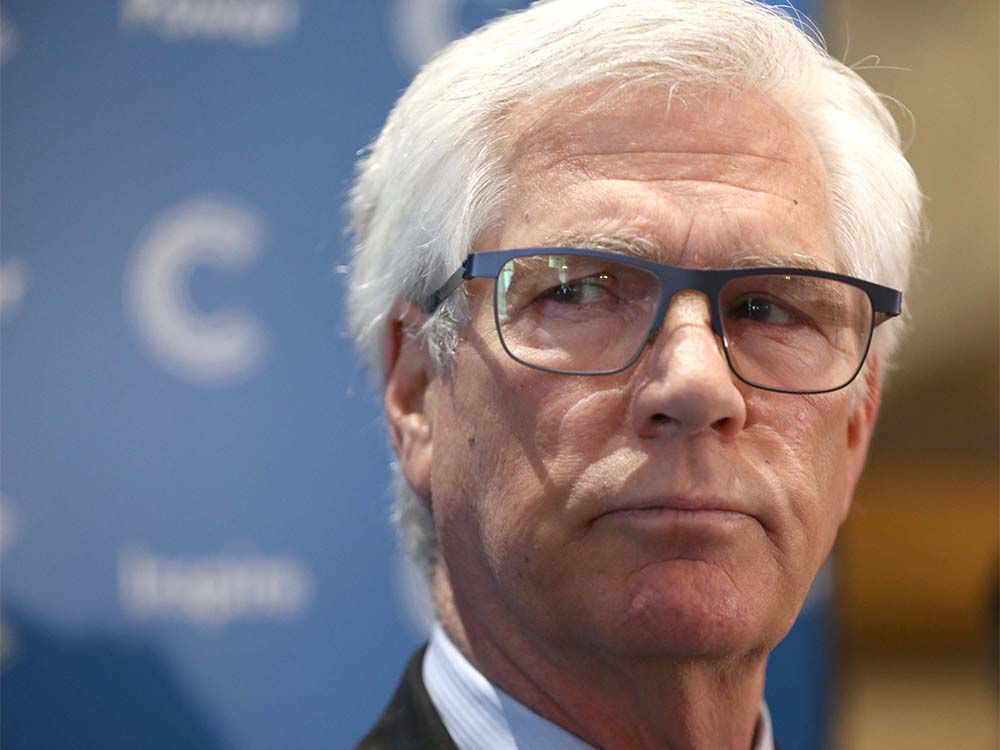
[ad_1]
The new federal budget isn’t a wasteland on the road to Alberta’s economic recovery, nor is it a clear-cut path to paradise.
A couple of key points in the months ahead will help determine its importance to the province: money to retrain workers and a new tax credit to spur carbon capture utilization and storage projects.
“It’s kind of middling. It has a few strong components,” said Mike Holden, chief economist with the Business Council of Alberta.
“From an Alberta perspective, it’s very silent on the energy sector, it’s silent on the future of the energy sector . . . Those components are quite concerning to us.”
Let’s start by examining the retraining issue.
For a province facing severe economic disruption from the pandemic — and an ongoing energy transition — a program to kick-start more job training is a necessity.
Alberta has received confirmation of federal funding (money initially designed to be spent in the last fiscal year) that will allow the province to move forward with its Jobs Now retraining initiative, Premier Jason Kenney said Tuesday.
“They did confirm that they reprofiled from last fiscal year to this fiscal year a $185 million in additional labour market development funding for Alberta,” Kenney told reporters.
“We have an approval in principle to do so through our pending Jobs Now program. I’ll be meeting with senior ministers (Wednesday) to just put the finishing touches on the program.”
An announcement is expected within the next week or two.
Last December, Kenney pledged his government would unveil the biggest jobs retraining initiative in Alberta’s history, helping workers dislocated from the oilpatch and other sectors.
In February, the
provincial budget
set aside $136 million for Jobs Now, which is designed to offer grants to employers to train and hire new employees.
Since then, there have been growing questions about delays and concerns that Alberta could lose access to federal funding already in place.
Manitoba MP Jim Carr, the Trudeau government’s special representative for the Prairies, pointed out the federal budget also has several new national programs to help train and recruit workers.
That includes $960 million for a new Sectoral Workforce Solutions program and another $250 million to help Canadians transition to new jobs.

“We are offering these programs knowing that people will be re-skilling and they will be upskilling,” Carr said in an interview.
“Our job is to identify the programs . . . to work with the private sector that already has a lot of experience in retraining and re-skilling.”
Alberta has a huge incentive for upgrading the skills of workers. The province’s jobless rate sat at 9.1 per cent in March, compared with 7.5 per cent nationally.
Thousands of people have lost their jobs since the pandemic began. As well, jobs in the oil and gas sector disappeared after the 2015 oil-price collapse triggered an industry restructuring.
Holden said there’s a role for the businesses in the retraining process.
“Employers are the ones who know what skills they have right now and what skills are lacking,” he said.
The importance of the issue was also highlighted this month in a TD Economics report that said the energy transition will affect workers in the oil and gas sector.
The transition could put between half and three-quarters of industry workers at risk of being displaced over the next 30 years, according to the study.
Government policies need to focus on communities most affected by the transition and provide broad-based income supports to those who need retraining, said report co-author Francis Fong, a TD senior economist.
There should also be a commitment to redesign retraining programs and look at what abilities and skills will be required by employers.
Fong said the new budget and federal commitments include talk of taking climate change seriously, “but I am afraid there is not enough focus on who is going to get impacted by that transition the most.”
Related
Another key issue for Alberta is the future of carbon capture utilization and storage (CCUS) projects.
These developments capture and bury emissions underground or use the carbon dioxide in various initiatives, such as for enhanced oil recovery, but projects have been expensive to develop.
In the United States, a successful tax credit has led to more CCUS developments being built, offering credits of $50 per tonne of CO2 permanently stored underground and $35 a tonne for those involving enhanced oil recovery.
Monday’s budget pledges a new tax credit for capital that’s invested in CCUS projects, as Canada strives to reach net-zero emissions by 2050.
The federal government will launch a 90-day consultation on the design of the tax credit. However, it’s “not intended” the break will be available for enhanced oil recovery projects, the document states.
Carr said the size of the credit and other details will be determined after the consultations.
“We have accepted this incentive method, this tax credit route, to get us to where we want to be,” he added.
In the oil and gas sector, the reaction to the credit was largely positive, as the industry was pressing for assistance to kick-start more investment into the technology.
In a statement, Cenovus CEO Alex Pourbaix called the announcement “an important step forward,” while Suncor Energy CEO Mark Little said the company sees CCUS “as a key enabler in meeting our shared environmental objectives.”
However, the exclusion of enhanced oil recovery from the federal tax credit caused some consternation. Kenney said the national tax credit needs to meet or exceed the U.S. incentive if it’s to attract sufficient investment.
“It’s a start . . . it’s not everything we asked for,” Energy Minister Sonya Savage said in an interview.
CCUS developments would allow the oilsands to potentially reach net-zero emissions and generate “low-cost, low-risk, low-carbon” oil, she added.
“That puts us in a remarkable position in this province to maintain and grow production and, at the same time, meet our environmental emission-reduction targets.”
Chris Varcoe is a Calgary Herald columnist.
[ad_2]
You can read more of the news on source
